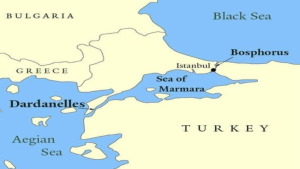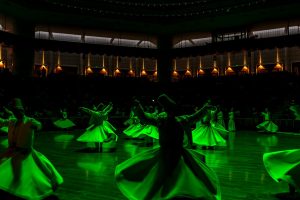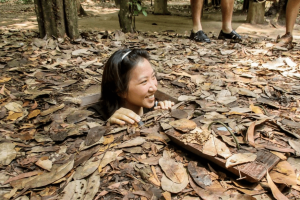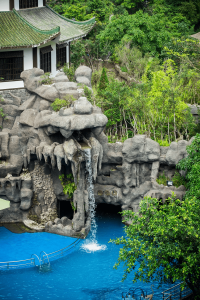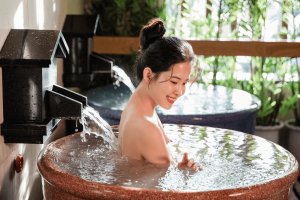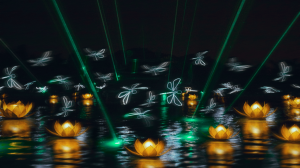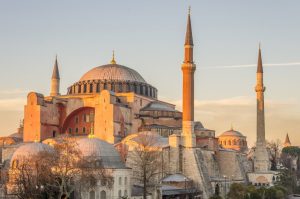
Walking Through History: A Tour of the Hagia Sophia
Architecture is one of the main attractions for tourists in Istanbul. Although the city is known for many things, including its locations and cuisine, architecture is the primary reason why it is always packed with tourists. Hagia Sophia, in particular, has a long history that makes people come back again and again. Initially, the place was a Byzantine church; then, it was an Ottoman mosque. After years of transformation, this place is now a museum representing Islamic and Christian influencers. The architectural wonder has impressive domes and magnificent mosaics, and the infuriating architecture is the best spot for people to visit! When you walk into the halls of Hagia Sophia, you will feel the history walking with you! If you want to experience the history, culture and architectural stories in one place, Hagia Sophia is the right destination! This fantastic place is a UNESCO World Heritage site. Where is Hagia Sophia located? When you are in Istanbul, visiting Hagia Sophia is a must. Sultanahmet, also known as the historic peninsula of Istanbul, travels towards the Hagia Sophia. You can also visit other places like the Topkapi Palace and Blue Mosque. What is special about Hagia Sophia? Hagia Sophia is mainly known for its rich culture and history. The different architectural styles including Byzantine and Islamic styles make the place look even more rich. Each layer of the architectural wonder gives a classy look! Things to do in Hagia Sophia: There are so many activities that you can do when you are in Hagia Sophia. History: Hagia Sophia has audio guides or tour guides everywhere. They will help you understand the complete history, including how it transitioned from a church to a mosque and now a museum. The cultural meaning! The place itself is a mix of Christian and Islamic segments. The accurate architectural details and the artwork perfectly justify the whole building. Photographs: If you are in Hagia Sophia, do not miss to capture the beauty of this landmark! Architectural beauty! The vast dome, beautiful mosaics and the detailed view of the building increase the beauty of the place. The mosaic study: The mosaics in the Hagia Sophia tell the stories of religious scenes, including the Dessis mosaic and the Empress Zoe mosaic. The beautiful views! If you are in Hagia Sophia, climb to the top floor and view the mind-blowing views. You will fall in love with the interior and architectural close-up views! Other places nearby: Hagia Sophia has other beautiful places to visit, such as Basilica Cistern, Topkapi Palace, and the Blue Mosque. Hence, the whole area is a destination of history residing! The right time to visit Hagia Sophia Visiting Hagia Sophia can be done at any time. But, the experience of visiting Hagia Sophia will differ based on the seasons. Summer: If you visit from June to August, Haggis Sophia is flooded with tourists as it is peak season. The warm weather becomes hotter by midday, and the daylight is longer here, so there will be a lot of time for tourists to explore. Winter: Istanbul has fewer crowds from December to February. If you like quieter visits, Winter is the right time for you. Though the weather becomes chilly, exploring Hagia Sophia during Winter gives a whole different experience. Few outdoor activities and sightseeing might be limited during Winter. Spring: With mild weather and blooming flowers, Spring becomes the peak season compared to summer. The temperature is pleasant, and the traffic is also lighter, making it preferable for tourists to choose this time. Fall: September to November is the best time for people who love travelling to Istanbul for a quieter exploration. Your travel checklist Pack these mandatory things for your trip to Hagia Sophia while travelling to Istanbul. Pre-planning checklist: Weather forecast: Before planning your trip to Istanbul, have a rough idea of the weather forecast during your trip and pack your dresses accordingly. Timing: Based on the weather, plan your itinerary and aim for early morning and late afternoon to avoid the crowds. Transportation: Regarding public or private transportation options for your Hagia Sophia, travel is best. Mandatories: Passport: Do not forget to carry your valid passports and IDs. Tickets and entry passes: Take your entry tickets to avoid waiting in longer queues. Cash/cards: Though most places accept cards, always carry some cash with you for smaller purchases. Extra things: Sunscreen: During the summer season, it is advised to pack your sunscreen lotions to avoid suntans. Guidebook and audio guides: For a seamless experience, take a guidebook and an audio guide. Travel adapter: Carry a travel adapter or a charger with you. Umbrella or rain gear: During rainy seasons, carry an umbrella or a raincoat. COVID-19 considerations: Face mask: Wear a facemask since there might be few COVID-19 regulations in some countries. Rules and regulations: There are specific protocols in some countries that need to be followed. Hand sanitiser: Always carry a small bottle of hand sanitiser for hygiene. Why choose Thrillark? Thrillark is one of the best platforms that connect people to local tour operators for vacationing seamlessly. We customize your itinerary plans based on your preferences, budget and travel styles. Thrillark assures complete guidance throughout your vacation in Istanbul. We will assist you in planning your itinerary and make your desires align with the plan! FAQs What is interesting about Hagia Sophia? The Hagia Sophia is one of the best architectural innovations in Istanbul. The unusual church size and the dome structure are significant justifications for its being a tourist spot. What is the old name for Hagia Sophia? Hagia Sophia has an old name. The architectural wonder’s original name is Megale Ekklesia, which means Great Church. It was only called Hagia Sophia after the year 430. Why is Hagia Sophia a tourist attraction? Hagia Sophia has beautiful architecture, with a large central dome, four smaller ones, and mosaics and frescoes around its interior. Its architecture blends Byzantine and Ottoman influences and is one of


